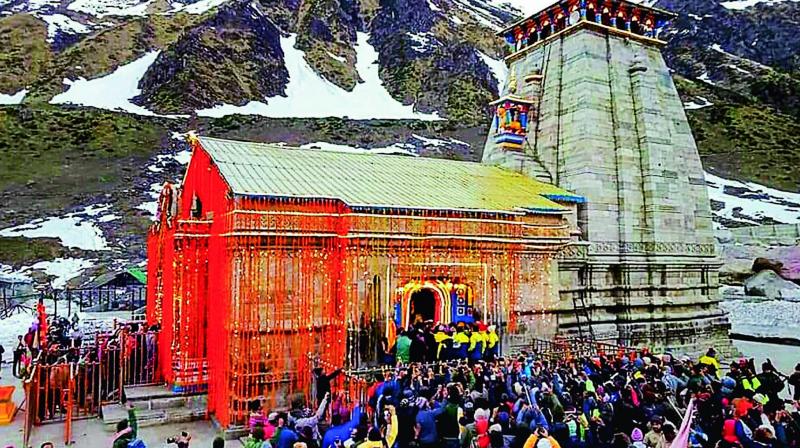Tourism takes ‘tragic’ turn

The concept of ‘dark tourism’ — a term coined by professors John Lennon and Malcolm Foley of Glasgow Caledonian University — is relatively new and strange, and describes travel to destinations associated with death and suffering. Now, in a surprising move, the Uttarakhand tourism department is planning to encourage precisely that in Kedarnath, thanks to the initiative of the State’s Tourism and Culture Minister Satpal Maharaj.
A Smriti Van (memorial forest) will be developed at Kedarnath where visitors will be able to learn about the 2013 disaster and pay homage to those who lost their lives in it.
Interestingly, of the 12 Jyothirlings of Lord Shiva, Kedarnath is very prominent and is one amongst the Char Dham. According to mythology, visiting the Char Dham helps wash away one’s sins and sets life on the path to Moksha. Given that Kedarnath has sentimental value for pilgrims, will it not send a negative message?
“A memorial to those who lost their life to the tragic natural calamity is welcome, but declaring it as a place of dark tourism is very contrary to Hindu belief. The word ‘dark’ is associated with followers of a secret or cult society whereas for any Hindu, Kedarnath is nothing short of atonement. It’s like slapping every Hindu and challenging his/her belief system,” says Vinod Ranka, MD, Avni Tech Ventures Pvt. Ltd.
The tag of ‘dark tourism’ will send a strong negative message especially in the minds of children and all those who lost their loved ones in the calamity, feels Skand Bali, principal, HPS, who adds, “We know there has been a huge tragedy at Kedarnath valley a few years back. But that does not mean the highly spiritual place, a place full of positivity, serenity and a place where we believe God himself resides, should be tagged with darkness in any way. Places of worship should be related to light, hope, happiness, brotherhood, positivity and love. I personally feel that no place should be tagged with names like ‘dark tourism’.”
Others question why Kedarnath has been singled out when tragedies have occurred at other religious spots and places of pilgrimage. “People understand the risks of visiting certain places and that natural disasters can happen anywhere. Thousands of people have been going to Kedarnath every year, so I don’t agree with the declaration of ‘dark tourism’. For people, it’s a sense of achievement and a satisfaction of visiting holy places,” says Shilpa Datla, chairperson YFLO.
Harping on the same belief, Anju Poddar, writer, traveller and avid art collector, who recently returned from Kedarnath says, “I do not like the idea of Kedarnath ji declared as dark tourism at all, natural disasters can happen anywhere. Comparing it with 9/11 doesn’t make any sense to me. 9/11 was a planned attack but what happened in 2013 in Kedarnath was a natural calamity.”

